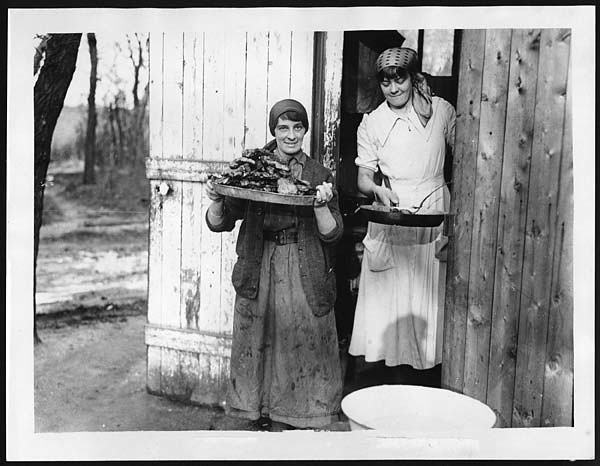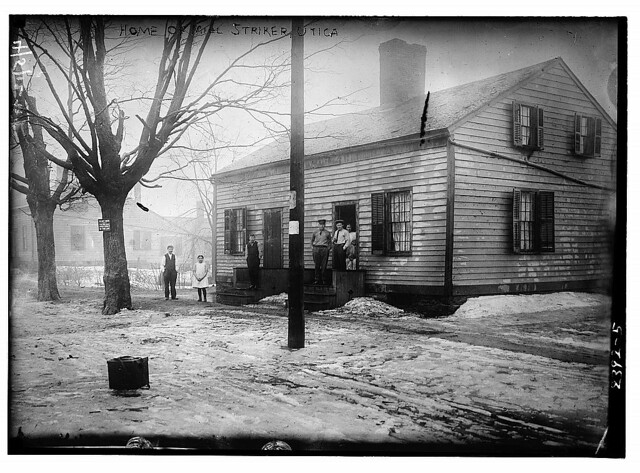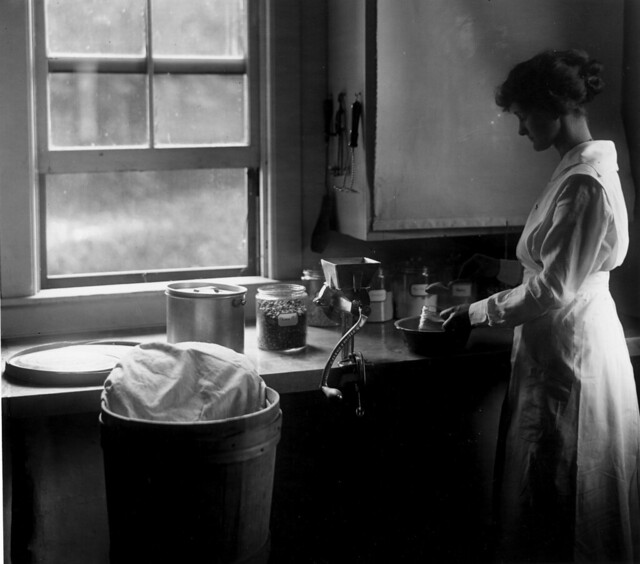Planning meals is pretty easy - we keep it low key around here and only plan for dinner. Some people plan for two (usually breakfast and dinner) or even three meals a day. I've even seen some planning templates that account for breakfast, lunch, dinner, and a snack! That's just a little too much for us considering we don't eat breakfast unless we absolutely have to, lunch is a portion that is left over from yesterday's dinner, and snacks are from the stocked fruitbowl we keep on the dining room table.
One of the sources that I've read, The Book of Household Management, which was written in 1859 describes an average housekeeper's day. One of the things that I noticed was the sheer amount of time devoted to food preparation and planning. There was a twice daily inventory of the kitchen for food that was about to spoil and numerous preparations for meals that were happening that evening or even the next day or two. Luckily meal planning is a lot simpler now. I do try to keep an eye on everything that needs to be used up so things don't go to waste but I'm not constantly trying to beat vegetables that only last a day or two due to a lack of refrigeration!
Here's how we plan meals around here:
1. Plan the meals for one week and post it somewhere handy. I try to put the more time consuming "experimental" meals on the weekend days or on Tuesdays or Thursdays when I know I will have more time in my schedule. I try to keep Friday a simple vegetable catch all (often stir fry or veggie soup) so that I can keep it easy since I get home late and am faced with week old produce that is usually coming close to the end of it's shelf life. I will repeat family favorites each week until we are tired of them and add in one or two new meals depending on how interesting and accessible the cooking blogs were this week!
Here is an example meal plan:
Monday: Spicy Thai Soup - This was my experimental meal for the week. I found this in the November issue of Martha Stewart. It was a 15 minute prep time recipe so I chose to do it on Monday!
Tuesday: Tofu Stir Fry - this is a family favorite and will use up the veggies from last week we didn't use.
Wednesday: Black Bean Soup and Cornbread - This is a wintertime favorite I can make on auto pilot. I have it timed so I make the cornbread in five minutes or less, put it in the oven, and make the soup. By the time the soup is done the cornbread is finished and cooling and we can eat both together.
Thursday: Curried Quinoa Salad - Another family favorite that I can make on auto pilot
Friday: Veggie Soup - Notice how I'm using up the week old vegetables? This is another quick and easy meal.
Saturday: Mutter Paneer - This is a time consuming recipe since it involves making the paneer first and then making the rest of the recipe. I chose to do this one on Saturday because it's a delicious recipe but it takes a substantial amount of time to do!
Sunday: Scrounge! - This is literally what I write on the meal plan. There is almost always one day a week that we don't end up making the planned meal so it gets moved to Sunday. If we do end up making all six then I find things in the cupboard and fridge that need to be used and make something of them. To help me pair ingredients I'll often type them into a google search and see what they come up as in a recipe!
2. Write the Grocery List. Take a look at the things you're making, check the recipes if you need to, and write the list down. Writing a list helps me make sure there are no last minute trips to the Grocery store midweek. Also, it helps me stay on budget when I shop!
3. Put the recipes for the week in one place. Most of my recipes are on my computer so I bookmark them, put them in the bookmark bar on my Chrome browser, and rename them for the days of the week they will be used. For example, my recipes are named "Monday," "Tuesday," and "Saturday" so I know what day I will use them. If it's from a cookbook or magazine I put a book marker into it and put that text onto my cookbook stand.
4. Shop for what you need. Remember to take the list! Stick to the list! We also take a calculator (actually our phones act as calculators) to keep a running total of what we're spending. Pick up some flowers for yourself while you're at it.
5. Every night take a look at the list of meals you've posted somewhere handy. See what you're making and then grab the book you've marked, the computer, or the magazine and start cooking! A little meal planning helps put the kitchen on autopilot!






